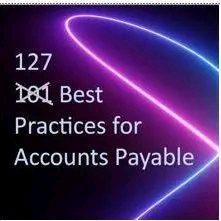My Job Doesn’t Have Retirement Benefits? What Can I Do?

Retirement benefits, including employer-sponsored plans like 401(k)s and pensions, are valuable tools for building a secure financial future.
However, not every job offers these benefits. If you find yourself in a position where your job doesn’t provide retirement benefits, don’t despair.
There are still steps you can take to plan for a comfortable retirement.
In this article, we’ll explore your options and strategies for securing your financial future.
Start with an Individual Retirement Account (IRA)
An Individual Retirement Account (IRA) is a powerful retirement savings tool available to anyone, regardless of whether their job offers retirement benefits.
There are two main types of IRAs:
• Traditional IRA: Contributions are tax-deductible, and earnings grow tax-deferred until withdrawal in retirement.
• Roth IRA: Contributions are made with after-tax dollars, but qualified withdrawals in retirement are tax-free.
You can open and contribute to an IRA on your own, making it a versatile option for retirement savings.
Save Consistently
While employer-sponsored plans often offer automatic deductions from your paycheck, without those benefits, it’s crucial to establish a disciplined savings routine.
Set a monthly or bi-weekly savings goal and stick to it. Consistency is key to building a substantial retirement fund over time.
Explore Self-Employed Retirement Options
If you’re self-employed or work as a freelancer, you have unique retirement options:
• Solo 401(k): If you have your own business with no employees (except a spouse), a Solo 401(k) allows you to contribute both as an employer and an employee, potentially enabling larger contributions.
• SEP IRA: Simplified Employee Pension (SEP) IRAs are designed for self-employed individuals and small business owners. They allow for flexible contributions based on your income.
Consider Investing
To make up for the lack of employer contributions, consider investing your savings.
A diversified investment portfolio can potentially yield higher returns over the long term.
However, be mindful of risk and consider consulting a financial advisor for guidance.
Review Social Security and Other Benefits
Social Security benefits can provide additional income during retirement. Make sure you understand your projected Social Security benefits based on your work history.
Additionally, explore other benefits you may be entitled to, such as pensions from previous jobs or government programs.
FAQs
Can I contribute to both a 401(k) and an IRA?
Yes, you can contribute to both a 401(k) and an IRA, as long as you meet the eligibility requirements for each account type. However, there are annual contribution limits for each account, so be mindful not to exceed them.
What’s the maximum annual contribution limit for IRAs in 2021?
In 2021, the annual contribution limit for IRAs is $6,000 for individuals under 50, with an additional catch-up contribution of $1,000 for those aged 50 and older.
Are there any tax benefits to contributing to an IRA if my job doesn’t offer retirement benefits?
Yes, contributing to a traditional IRA can provide tax deductions, potentially reducing your taxable income for the year. Roth IRA contributions are made with after-tax dollars but offer tax-free withdrawals in retirement.
Are there penalties for early withdrawals from IRAs?
Yes, there can be penalties for early withdrawals from IRAs, typically a 10% penalty in addition to income tax on the withdrawn amount if taken before age 59½. There are exceptions for certain qualifying circumstances.




